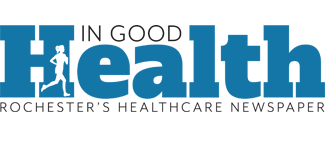Really, Really Bad Food You Should Stay Away From (If You Can)
By Anne Palumbo
 We hear a lot about “superfoods” these days — foods that offer high levels of desirable nutrients that are believed to offer simultaneous health benefits beyond their nutritional value.
We hear a lot about “superfoods” these days — foods that offer high levels of desirable nutrients that are believed to offer simultaneous health benefits beyond their nutritional value.
These foods, as defined in the Merriam-Webster Dictionary, are “rich in compounds (such as antioxidants, fiber or fatty acids) considered to be beneficial to a person’s health.”
But what about “superbadfoods” — foods that offer high levels of undesirable nutrients that clog arteries, add pounds, raise blood pressure, trigger diseases, and shorten lives? Foods that we mindlessly eat or (gasp!) feed to our kids or grandkids? Where’s Merriam’s definition for those disastrous foods?
While there are dozens of unhealthy foods out there, we’ve mentioned some alarming — perhaps surprising — foods that our bodies could regularly do without.
Just how bad are they?
Well, when you compare what these superbadfoods offer up in a single serving against what the experts recommend for an entire day, you may be persuaded to rethink your eating habits.
Average daily recommendations from accredited institutions:
• Sodium: less than 2,300 milligrams per day (equal to about 1 teaspoon of table salt) and no more than 1500 milligrams per day with high blood pressure.
• Sugar: no more than 100 calories per day (about 6 teaspoons or 24 grams) for most adult women and no more than 150 calories per day (about 9 teaspoons or 36 grams) for most men.
• Fat: should contribute 20% to 35% of total daily calories (about 45-78 grams) with no more than 20 to 30 grams of saturated fat.
• Cholesterol: no more than 200 milligrams a day (if risk factors for heart disease present); no more than 300 milligrams a day (if no risk factors).
• Overall calories: Calorie needs vary depending on the person and their personal health goals, but an average starting number is around 2,000 calories per day.
Of course, no one is suggesting you never fraternize with another Frito again. Moderation is the key here: daily, devoted, mindful moderation. As the saying goes, “Man and woman cannot live on junk food alone.”
Bacon and Other Processed Meats
 What do years of regularly eating processed meats and health have in common?
What do years of regularly eating processed meats and health have in common?
Cancer.
According to the World Health Organization, regular consumption of processed meats — bacon, sausage, hot dogs, ham and cold cuts — has been associated with an increased risk of cancer (especially colon and stomach), as well as heart disease and diabetes. All meat that has been smoked, salted, cured, dried or canned is considered processed. Nitrates and nitrites — whether synthetic or natural (i.e. celery powder) — are the processing agents behind the elevated risk. Chemicals aside, many processed meats are high in calories, fat (especially saturated fat) and sodium. One classic Zweigles hot dog (minus the bun and fixings) has 220 calories, 19 grams total fat (7g saturated), and 660 milligrams salt. Three slices of bacon have 150 calories, 12 grams total fat (3 grams saturated), and 550 milligrams salt. With early-onset colon cancer rates on the rise for younger adults, it should give all of us pause. Many experts do say, however, that eating a small amount of processed meat occasionally, such as once or twice a month, is unlikely to significantly harm health.
Tips: Check out plant-based alternatives. Swap red-meat processed foods for white-meat processed foods, which generally have less total and saturated fat. Consider canned or pouched tuna or salmon instead of classic lunchmeats like ham, pastrami, roast beef or salami.
Sugar-Loaded Soft Drinks
Drinking soda is like guzzling liquid candy, no thanks to its high concentration of sugar. Sugary drinks are a major contributor to our country’s obesity epidemic, which is why many states have actively banned the sale of sodas in high schools. Coke Original, America’s most popular soft drink, has 2-3 times our average daily sugar needs in one serving! Why worry about consuming too much sugar? In the short term, it may contribute to acne, weight gain, tooth decay and fatigue. In the long term, excessive sugar consumption increases the risk of Type 2 diabetes, obesity, heart disease, certain cancers, high blood pressure and depression. Of course, some sugar (which the body converts to glucose) is essential for energy production and proper brain function.
Tips: Gradually replace soda with nutritious alternatives: water infused with fresh fruits and herbs, sparkling water with a splash of fruit juice, homemade iced or herbal tea, reduced-sugar fruit juices and smoothies, and good old plain water.
Chips and Snacks
Oh, how we love our Lay’s, Doritos, Cheetos and Rice Krispies Treats here in America! Indeed, they fly off our supermarket shelves to the tune of $52 billion per year. Despite being convenient and addictive to boot, chips, like most other ultraprocessed snacks, are astoundingly unhealthy (one serving of Lay’s classic: 160 calories, 10 grams of fat, 170 milligrams sodium). What’s more, they defy everything — everything — a snack is supposed to do: give your body a nutrient-dense, long-lasting pick-me-up between meals. Research has shown that because today’s ultraprocessed snacks contain a lot of fat, sugar, salt and carbs, they are better at activating the brain’s reward system. Translation? We can’t stop eating them. The unfortunate consequences? We develop many of the same chronic diseases as those associated with sugar-loaded soft drinks.
Tips: Opt for snacks with protein, fiber, and healthy fats that take longer to digest and help keep you full throughout the day. A few suggestions: nuts, Greek yogurt with fruit, hard-boiled eggs, cheese with whole-grain crackers, popcorn, homemade trail mix and protein smoothies.
Canned and Chain-Restaurant Soups
Although soups may be the perfect meal when you’re feeling chilly, under the weather or not particularly hungry, some canned and chain-restaurant soups are not so perfect for your health. From sodium to fats, calories to cholesterol, soups can foil your good intentions in just a few slurps. Are you sitting down? One cup of Campbell’s Chicken Noodle Soup, their most popular soup, has 1780 milligrams of sodium — a whopping 78% of daily needs knocked off in one bowl (over 100% for those with high blood pressure). Panera’s popular broccoli cheddar soup has 1560 milligrams of sodium without the bread bowl and a staggering 2140 milligrams with. While sodium is an essential nutrient that controls blood pressure and is needed to make nerves and muscles work properly, too much sodium can lead to high blood pressure, heart disease, kidney strain, and stroke. It can also drain calcium from bone.
Tips: When dining out, choose broth-based soups over cream-based; when buying canned, opt for lower-sodium broth-based soups; and when making soup, go easy on the salt, substitute cream or whole milk with reduced-fat milk, use whole grains versus refined, and up the veggies.
Sneaky Fast-Food Salads
Most of us think salads are automatically healthier foods: low in calories, sodium, and fat; high in vitamins, protein, and fiber. The ones we make at home: perhaps; the ones we order out: perhaps not. For example, Chick-fil-A’s Cobb salad with avocado-lime ranch dressing—high in calories (830), fat (60 grams), and sodium (2220 mg)—is no day at the healthy-diet beach! And building a Chipotle salad with lettuce, chicken, guacamole, corn, cheese, and chipotle-honey vinaigrette, chased with a side of queso blanco and chips, could quickly turn that healthy-sounding lunch into a calorie bomb. Nonetheless, salads are an important part of a healthy diet because they are a year-round source of essential vitamins, nutrients, and beneficial antioxidants that can help reduce the risk of chronic diseases such as heart disease, diabetes, cancer, and obesity.
Tips: Whether taking out or making at home, assemble salads wisely: forgo caloric toppings (bacon bits, croutons, candied nuts) and baked shell bowls, go for dark greens, add healthy protein sources, bump up the veggies, opt for vinaigrette- or yogurt-style dressings over cream-, cheese-, or mayo-based ones, and request dressing on the side. Oh, and stay away from “crispy” and “crunchy” protein sources, as the description implies “deep-fried.”
French Fries and Other Fried Foods
 From French fries to onion rings, doughnuts to funnel cakes, many of us find fried foods irresistible. Unfortunately, compared to other cooking methods, deep frying adds a lot of calories and fat. For example, one small baked potato contains 120 calories and 0.2 grams of fat, while the same amount of French fries contains 430 calories and 20 grams of fat. What’s more, fried foods are typically high in trans fats, the worst kind of fat you can eat. Unlike other dietary fats, trans fats do a number on cholesterol: raising “bad” while lowering “good.” Research has shown that a diet laden with trans fats increases the risk of heart disease, the leading killer of adults. But the badness of fried foods doesn’t end there. Regularly eating fried foods puts you at a greater risk of developing Type 2 diabetes and obesity, two conditions that, over time, can lead to high blood pressure, some cancers, nerve damage, sleep apnea, dementia, heart disease, asthma, and more. Yikes.
From French fries to onion rings, doughnuts to funnel cakes, many of us find fried foods irresistible. Unfortunately, compared to other cooking methods, deep frying adds a lot of calories and fat. For example, one small baked potato contains 120 calories and 0.2 grams of fat, while the same amount of French fries contains 430 calories and 20 grams of fat. What’s more, fried foods are typically high in trans fats, the worst kind of fat you can eat. Unlike other dietary fats, trans fats do a number on cholesterol: raising “bad” while lowering “good.” Research has shown that a diet laden with trans fats increases the risk of heart disease, the leading killer of adults. But the badness of fried foods doesn’t end there. Regularly eating fried foods puts you at a greater risk of developing Type 2 diabetes and obesity, two conditions that, over time, can lead to high blood pressure, some cancers, nerve damage, sleep apnea, dementia, heart disease, asthma, and more. Yikes.
Tips: Avoid or severely limit your intake of fried foods. When frying at home, choose safer, more stable oils: coconut, olive, or avocado over canola, corn or sesame oil (to name a few). Consider healthier cooking methods: steaming, roasting, stir- or air-frying.
Final Take-home Message
Read product labels and restaurant menus carefully, from nutritional information to ingredients. Consider how something is prepared: baked versus fried. Think about health in the long run, from yourself to your loved ones to those on the way.

Anne Palumbo writes the column Smart Bites, which is published every month in In Good Health.

